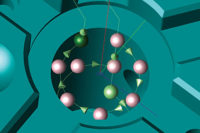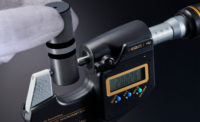Engineers have historically used 2D drawings to convey product manufacturing information, even though they design products in 3D. But as quality control has become even more important, and as parts and components are becoming more complex to measure, the demand for automatic measurement programming has grown.
Recently, more manufacturers have begun using model-based definition (MBD) methods, to insert product data directly into 3D models. This creates one, dependable source of information that ultimately improves quality.
A MBD is a 3-D model with data elements that customers can use in place of a traditional drawing. An MBS model becomes the expert source that drives all engineering decisions.
While manufacturers have applied MBD to product definition for some time, they have only recently applied it as a quality assurance process, experts say. They also say that MBD is a more efficient way to obtain CMM results for comparison to CAD models.
Not only does this boost quality, but it also saves manufacturers time. These sophisticated software programs reduce programming time by at least 95%, compared with programming using general-purpose software. As a result, these programs have the potential to considerably boost the efficiency of measurement processes. Experts say that a complex program that may have taken manufacturers five hours to complete manually can now be completed in 15 minutes.
Improvements in CMM equipment and developments in model-based software solutions have also helped make the technology more accessible.
That’s because automatic measurement program generation software creates and follows a model-based workflow. And, CMMs are configurable virtually. Users need only to import an MBD, apply a set of rules and matched those rules to the configured CMM. Then, a part program is automatically generated.
As a result of these benefits, demand has skyrocketed for automatic measurement programming in recent years.






